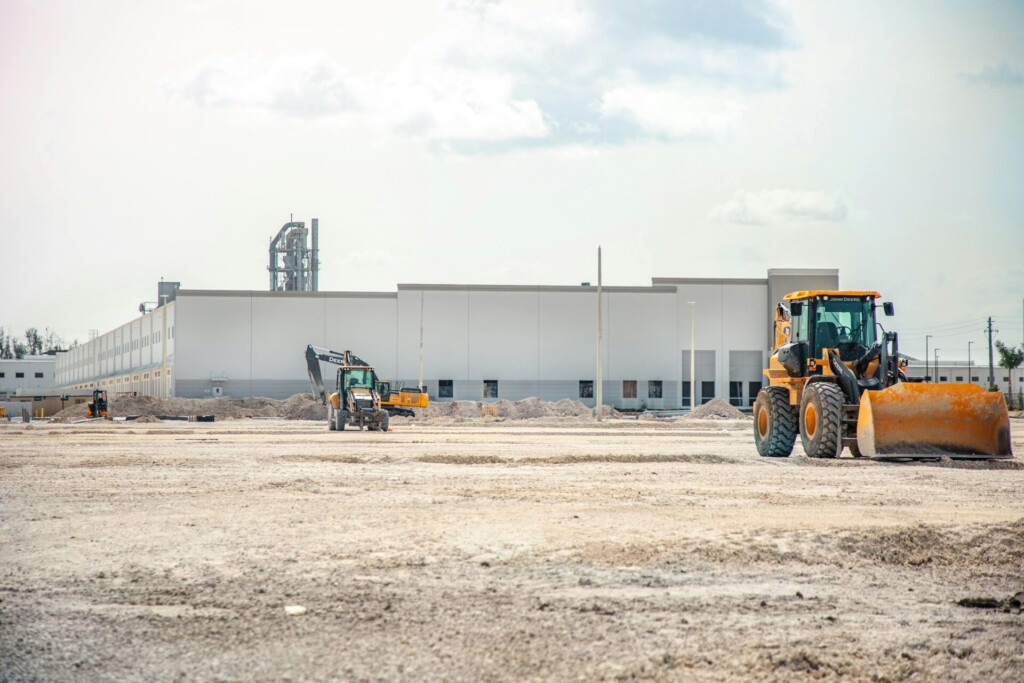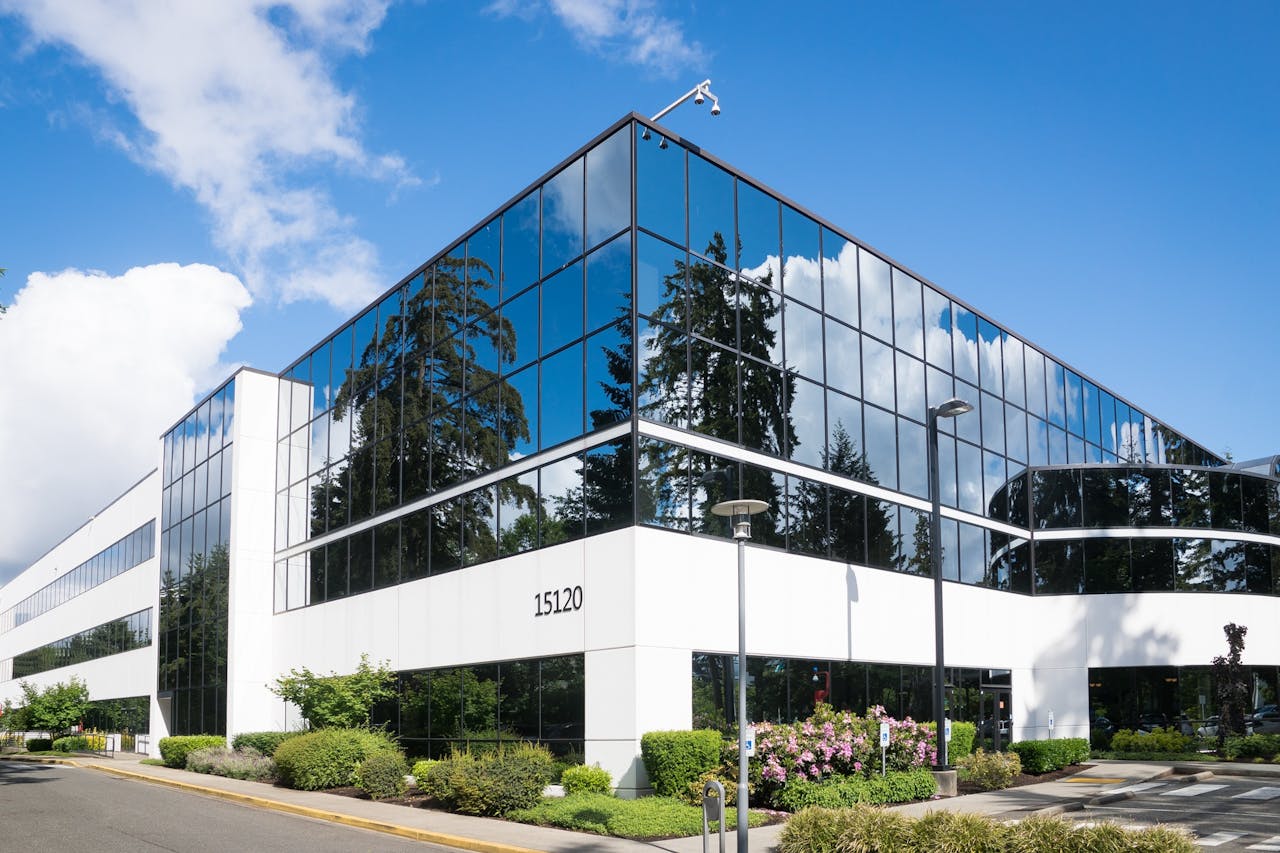Depreciation on new commercial construction serves as a significant financial tool for property owners and investors. It enables building owners to decrease their taxable income by deducting part of the property’s cost annually. This concept is essential for those involved in commercial real estate development or ownership.
According to IRS regulations, commercial buildings have a designated depreciation timeline. The standard period for commercial structures is 39 years, applied using a straight-line method. This means the building’s depreciable value is evenly distributed over nearly four decades. By comparison, residential rental properties have a shorter 27.5-year depreciation schedule.
It’s crucial to understand that depreciation is applicable only to the building and its improvements, and not to the land value. This distinction is vital when calculating the depreciable basis of a commercial property. By effectively utilizing depreciation, astute investors can refine their tax strategy and potentially enhance their overall return on investment in commercial real estate ventures.
How Does the MACRS Depreciation Method Work for Commercial Construction?

The Modified Accelerated Cost Recovery System (MACRS) is the standard method used for depreciating commercial construction assets for tax purposes. As general contractors, it’s essential to understand how MACRS applies to the various components of commercial buildings we construct. Here’s an overview of how it works:
General Depreciation System for Buildings
For the main structure of commercial buildings, we utilize the General Depreciation System (GDS) under MACRS. This involves using straight-line depreciation over a 39-year recovery period. Essentially, an equal portion of the building’s cost basis is deducted each year for nearly four decades.
Accelerated Depreciation for Building Components
While the building itself depreciates slowly, certain components can be depreciated more rapidly:
- Land improvements such as parking lots and landscaping: 15-year recovery period using the 150% declining balance method
- Personal property items such as furniture and equipment: 5 or 7-year recovery periods using the 200% declining balance method
This accelerated depreciation for components allows more of the tax benefits to be front-loaded for clients in the early years following construction.
Applying MACRS in Practice
When a commercial project is completed, we work with the property owner and their tax advisors to:
- Determine the depreciable basis of the building and its components
- Classify each asset into the appropriate recovery period
- Apply the correct depreciation method and convention
- Calculate annual depreciation deductions
Proper application of MACRS requires attention to detail but allows us to maximize the tax benefits of new construction for our clients.
By leveraging MACRS effectively, we ensure commercial property owners can recover their capital investments optimally for tax purposes. The nuanced application of different schedules and methods to various building components is a key way we add value beyond just the physical construction.
What Are Cost Segregation Studies and Their Benefits?
At EB3 Construction, we understand that cost segregation studies can be a valuable tool for commercial property owners to accelerate depreciation and reduce tax liabilities. These engineering-based analyses identify and reclassify building components to optimize depreciation deductions in the initial years of property ownership.
Instead of depreciating an entire building over the standard 39-year duration, cost segregation allows us to categorize specific elements as personal property (5-7 year depreciation) or land improvements (15-year depreciation). This strategic reclassification can lead to considerable tax savings and enhanced cash flow for our clients.
For example, we recently conducted a cost segregation study for a client’s new office building. By reclassifying specialized electrical systems for their IT infrastructure as 5-year property instead of part of the 39-year building structure, we could accelerate over $200,000 in depreciation deductions to the first year. This resulted in substantial tax savings that the client reinvested into growing their business.
Some common building components that we evaluate for accelerated depreciation include:
- Specialized plumbing and electrical systems
- HVAC components
- Floor and wall coverings
- Landscaping and site improvements
- Decorative finishes and lighting
Our experienced team of construction engineers and tax specialists work together to conduct thorough, IRS-compliant cost segregation studies. We carefully analyze building plans, conduct site inspections, and apply our industry expertise to identify all opportunities for accelerated depreciation.
While cost segregation studies require an upfront investment, the potential tax savings often significantly exceed the costs for qualifying properties. We generally find that buildings with a depreciable basis of $750,000 or more are well-suited to benefit from a cost segregation analysis.
As your construction partner, EB3 can integrate cost segregation planning into the early stages of your project to maximize tax benefits. We take a strategic approach to ensure building components are designed, constructed, and documented to support accelerated depreciation treatment.
By leveraging cost segregation studies, we help our clients improve cash flow, reduce tax liabilities, and free up capital to reinvest in their businesses. Contact EB3 Construction today to learn more about how cost segregation could benefit your next commercial building project.
What Special Depreciation Allowances Are Available for Construction?

Managing the costs of construction projects is crucial, and we understand that commercial property owners require every available tax advantage. That’s why we assist our clients in leveraging special depreciation provisions to significantly reduce tax burdens in the early years of asset ownership.
Two key provisions we frequently utilize are Section 179 expensing and Bonus Depreciation. While they share some similarities, they differ in their application:
Section 179 Expensing
Section 179 allows businesses to immediately deduct the full purchase price of qualifying property and equipment in the year it’s placed in service. For 2023, the deduction is capped at $1,160,000, with a phase-out threshold beginning at $2,890,000 in total equipment purchases. This feature is particularly valuable for small to mid-sized construction companies making moderate annual investments in equipment and qualifying property improvements.
Bonus Depreciation
Bonus Depreciation complements Section 179 by allowing additional first-year depreciation on new and used qualifying property. It’s especially beneficial for larger construction firms with high-value equipment purchases or extensive building component acquisitions that exceed Section 179 limits.
However, it’s crucial to note that Bonus Depreciation is currently in a phase-out period. For property placed in service in 2023, the allowable Bonus Depreciation percentage has decreased to 80% of the purchase price. This percentage will continue to decline by 20% each year until it is fully phased out after 2026, unless new legislation is enacted.
Strategic Considerations
We work closely with our construction clients to optimize the use of these provisions based on their specific circumstances. Key factors we consider include:
- The scale and timing of planned equipment purchases and property improvements
- Current and projected taxable income levels
- Long-term business growth plans
- Cash flow needs and financing arrangements
By carefully analyzing these factors, we can develop a depreciation strategy that maximizes tax benefits while aligning with overall business objectives. In many cases, a combination of Section 179 and Bonus Depreciation provides the most advantageous outcome.
Given the ongoing phase-out of Bonus Depreciation, we advise many of our clients to accelerate planned equipment acquisitions where feasible. This approach can secure more substantial tax benefits before the allowable percentages decrease further.
While these special depreciation allowances offer significant advantages, navigating their complexities requires expertise. We stay current with the latest tax code changes and industry-specific provisions to ensure our clients in the construction sector maximize their depreciation benefits.
As your construction project partners, we’re committed to helping you make informed decisions about asset acquisition and depreciation strategies. By effectively leveraging these special allowances, we can help improve your cash flow and support continued growth in your construction business.
What Factors Determine Depreciation Basis for Commercial Construction?
The depreciation basis for commercial construction is determined by several key factors that affect how much of the property’s value can be deducted over time. Understanding these elements is crucial for maximizing tax benefits and accurately reporting depreciation expenses.
Initial Cost Basis
The starting point for determining depreciation basis is the property’s cost basis. This includes:
- Purchase price of the property
- Sales tax paid
- Delivery and installation costs
- Legal and accounting fees related to the purchase
- Real estate taxes assumed for the seller
For new construction projects, the cost basis encompasses all direct and indirect costs necessary to bring the property into service, including:
- Materials and supplies
- Labor costs
- Architect fees
- Permit and inspection fees
- Construction period interest and property taxes
Depreciable Basis Calculation
To determine the depreciable basis, you must subtract the value of land from the total cost basis, as land is not depreciable for tax purposes. For example:
Total property cost: $2,000,000
Land value: $500,000
Depreciable basis: $1,500,000
Basis Adjustments
Several factors can adjust the depreciation basis over time:
- Improvements: Major renovations or additions that extend the property’s useful life increase the depreciable basis.
- Casualty losses: Damage from disasters may reduce the basis if not fully covered by insurance.
- Partial dispositions: Removing or replacing a component of the building may allow for a partial asset disposition, reducing the depreciable basis.
Useful Life Determination
The IRS assigns a 39-year depreciation period for most commercial buildings. However, certain components identified through a cost segregation study may be eligible for shorter depreciation periods:
- 5-7 years: Furniture, fixtures, and equipment
- 15 years: Land improvements (parking lots, landscaping)
- 27.5 years: Residential rental property
Properly categorizing these elements can significantly impact the overall depreciation strategy.
By carefully considering all factors that determine the depreciation basis, commercial property owners can ensure they’re maximizing their allowable deductions while remaining compliant with IRS regulations. Consulting with a qualified tax professional is advisable to navigate the complexities of commercial real estate depreciation and develop an optimal tax strategy.
Conclusion: Maximizing Tax Benefits Through Strategic Depreciation

Understanding depreciation on newly constructed commercial properties is key to maximizing tax benefits and enhancing cash flow. By strategically applying the right depreciation methods, conducting cost segregation studies, and taking advantage of available tax incentives, property owners can significantly reduce their tax burden during the initial years of ownership. This strategy enables businesses to defer taxes and reinvest capital into growth opportunities.
The intricate landscape of depreciation rules and their considerable financial impact means that uniform solutions are rarely effective. Each property and business case is unique, demanding a tailored strategy to fully utilize available tax advantages. Therefore, consulting with tax professionals who specialize in commercial real estate is not just recommended—it is essential to optimizing your financial position.
Now is the moment to evaluate your current approach to depreciation. Are you using all available strategies to minimize your tax burden? Have you conducted a cost segregation study to identify opportunities for accelerated depreciation? Are you staying updated on changes in tax law that could affect your depreciation methods?
We encourage you to take action today. Consult with a qualified tax professional to review your depreciation strategy and ensure you are maximizing the financial benefits of your commercial real estate investments. With expert guidance and a proactive approach, you can transform depreciation from a complex accounting concept into a powerful tool for business growth and financial optimization.
Contact EB3 Construction to learn how we can help you navigate the complexities of commercial construction, including strategic approaches to depreciation that align with your business goals.




